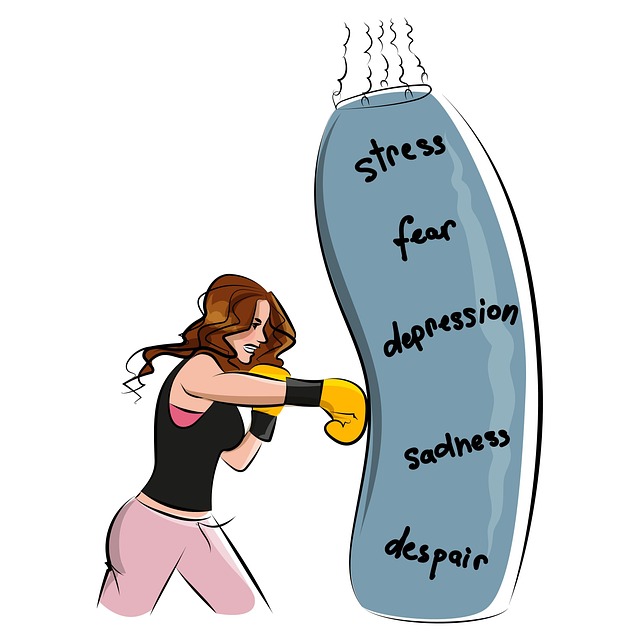Mental wellness journaling, integrated with Parker Therapy for Therapists-Clinicians, is a powerful tool that enhances self-reflection and personal growth. By encouraging clients to document thoughts and emotions, therapists facilitate deeper understanding of mental health landscapes, track mood patterns, identify triggers, and cultivate mindfulness. Regular journaling supports depression prevention through reflection on positive changes and progress tracking. This technique benefits both therapists and clients, aids in cultural competency, and serves as a burnout prevention strategy for therapists. Structured journaling helps clients process emotions, uncover patterns, challenge negative thought cycles, and build resilience, leading to better mental health outcomes. Combining journaling with evidence-based techniques like CBT or mindfulness enhances emotional intelligence skills and fosters open communication within the Parker Therapy framework.
“Unleash the power of self-reflection and healing with Mental Wellness Journaling—a revolutionary practice gaining traction in the therapeutic world. This comprehensive guide, tailored from a Parker Therapy perspective, offers therapists and clinicians a roadmap to integrating journaling into their practices effectively. Discover the profound benefits, from enhanced client communication to improved therapy outcomes. Learn practical tips for creating structured exercises, facilitating meaningful discussions, and diversifying journaling techniques across various therapy modalities.”
- Understanding Mental Wellness Journaling: A Parker Therapy Perspective for Therapists-Clinicians
- Benefits of Implementing Journaling in Therapeutic Practice
- Creating a Structured Journaling Exercise: Tips and Techniques
- Facilitating Effective Communication Through Journaling
- Integrating Journaling into Different Therapy Modalities
Understanding Mental Wellness Journaling: A Parker Therapy Perspective for Therapists-Clinicians

Mental wellness journaling is a powerful tool that aligns perfectly with the principles of Parker Therapy for Therapists-Clinicians. This therapeutic approach emphasizes self-reflection and personal growth, making journaling an ideal supplement to traditional therapy sessions. By encouraging clients to introspect and document their thoughts and emotions, therapists can facilitate a deeper understanding of their mental health landscape.
Journaling offers a safe space for individuals to explore their feelings, track mood patterns, and identify triggers for stress or anxiety. This self-awareness is crucial in the emotional well-being promotion techniques we employ. Moreover, regular journaling can serve as a form of mindfulness meditation, helping clients cultivate presence and acceptance of their experiences. As therapists, we can guide clients to use their journals as a resource for reflection, identifying positive changes and tracking progress towards personal goals, ultimately contributing to depression prevention.
Benefits of Implementing Journaling in Therapeutic Practice

Journaling has emerged as a powerful tool in therapeutic practice, offering numerous benefits for both therapists and their clients. By incorporating this technique into sessions, therapists can facilitate a deeper level of self-awareness and introspection for individuals seeking support. The act of writing down thoughts, emotions, and experiences allows for increased clarity and reflection, which is essential in the therapeutic process. Through regular journaling exercises, clients can identify patterns, gain insights into their mental health, and develop coping strategies tailored to their unique needs.
For healthcare providers, especially those in the field of Parker Therapy or Clinical Practice, incorporating journaling can serve as an effective burnout prevention strategy. It encourages self-care and reflection, helping professionals maintain a healthy work-life balance. Moreover, journaling can enhance cultural competency among healthcare providers by fostering empathy and deeper connections with clients from diverse backgrounds. This practice promotes a more nuanced understanding of mental health concerns, ensuring tailored and culturally sensitive support for every individual.
Creating a Structured Journaling Exercise: Tips and Techniques

Creating a structured journaling exercise is a powerful tool for therapists and clinicians looking to support clients in their mental wellness journey. A well-designed journal prompts users to reflect, process emotions, and gain insights into their thoughts. To implement this effectively, consider a Parker Therapy for Therapists-Clinicians approach that incorporates specific techniques. Start by setting clear goals aligned with the client’s needs; whether it’s managing stress, improving self-awareness, or processing traumatic events. Each entry should have a focus, such as exploring feelings about a particular event or tracking progress towards personal growth goals.
Encourage clients to use a Self-Care Routine Development for Better Mental Health format where they can record their daily experiences, emotions, and how they chose to nurture themselves. This practice not only enhances self-awareness but also reinforces healthy coping mechanisms. The Community Outreach Program Implementation of journaling as a therapeutic tool can create a safe space for individuals to express themselves honestly. Through guided prompts and regular reflection, therapists can help clients uncover patterns, challenge negative thought cycles, and cultivate resilience, ultimately fostering better mental health outcomes.
Facilitating Effective Communication Through Journaling

Journaling is a powerful tool that can facilitate effective communication and insight for both therapists and their clients. By encouraging individuals to reflect on their thoughts, feelings, and experiences in writing, therapists can gain valuable insights into their client’s mental wellness journey. This introspective practice allows clients to process emotions, identify patterns, and explore personal growth opportunities.
Through structured journaling exercises tailored by professionals like those at Parker Therapy for Therapists-Clinicians, clients can enhance self-esteem improvement and build resilience. The reflective process enables therapists to create a safe space where clients feel comfortable expressing themselves openly. This open communication fosters deeper connections, aids in risk management planning for mental health professionals, and ultimately contributes to more successful therapy outcomes.
Integrating Journaling into Different Therapy Modalities

Journaling has emerged as a powerful tool within various therapy modalities, offering a unique way for individuals to explore and express their thoughts and emotions. For therapists and clinicians, incorporating journaling exercises into sessions can provide a dynamic and effective approach to enhance traditional treatment methods. The Parker Therapy model emphasizes the importance of self-reflection and introspection, making it a natural fit for encouraging clients to engage in regular journaling practices.
By integrating journaling with evidence-based techniques such as Cognitive Behavioral Therapy (CBT) or Mindfulness-Based Practices, therapists can support clients in developing emotional intelligence skills. This practice facilitates the exploration of thoughts, feelings, and behaviors, allowing individuals to gain valuable insights into their mental health journeys. Additionally, mental health education programs design activities that promote emotional well-being through journaling can empower clients to take an active role in managing their mental wellness, fostering a sense of agency and self-care.
Mental wellness journaling, as facilitated by Parker Therapy for therapists-clinicians, offers a powerful tool to enhance therapeutic practice. By integrating structured journaling exercises, professionals can promote self-reflection and communication, ultimately benefiting clients’ mental health journeys. This article has explored various techniques, from understanding the benefits to creating engaging activities, providing a comprehensive guide for therapists seeking to incorporate this innovative approach into their work.














